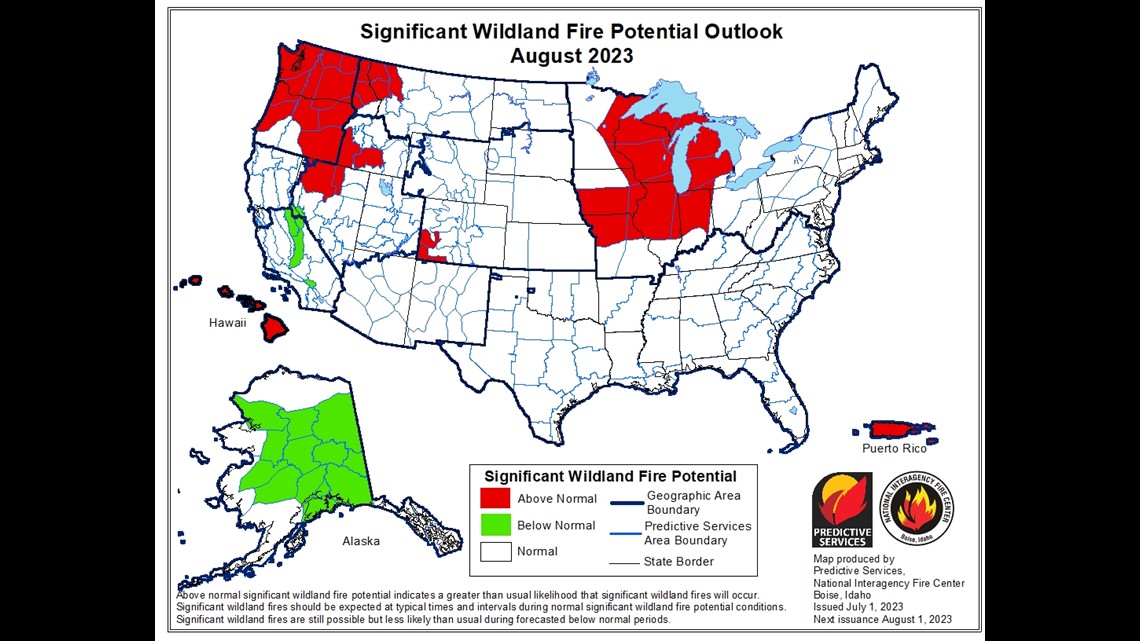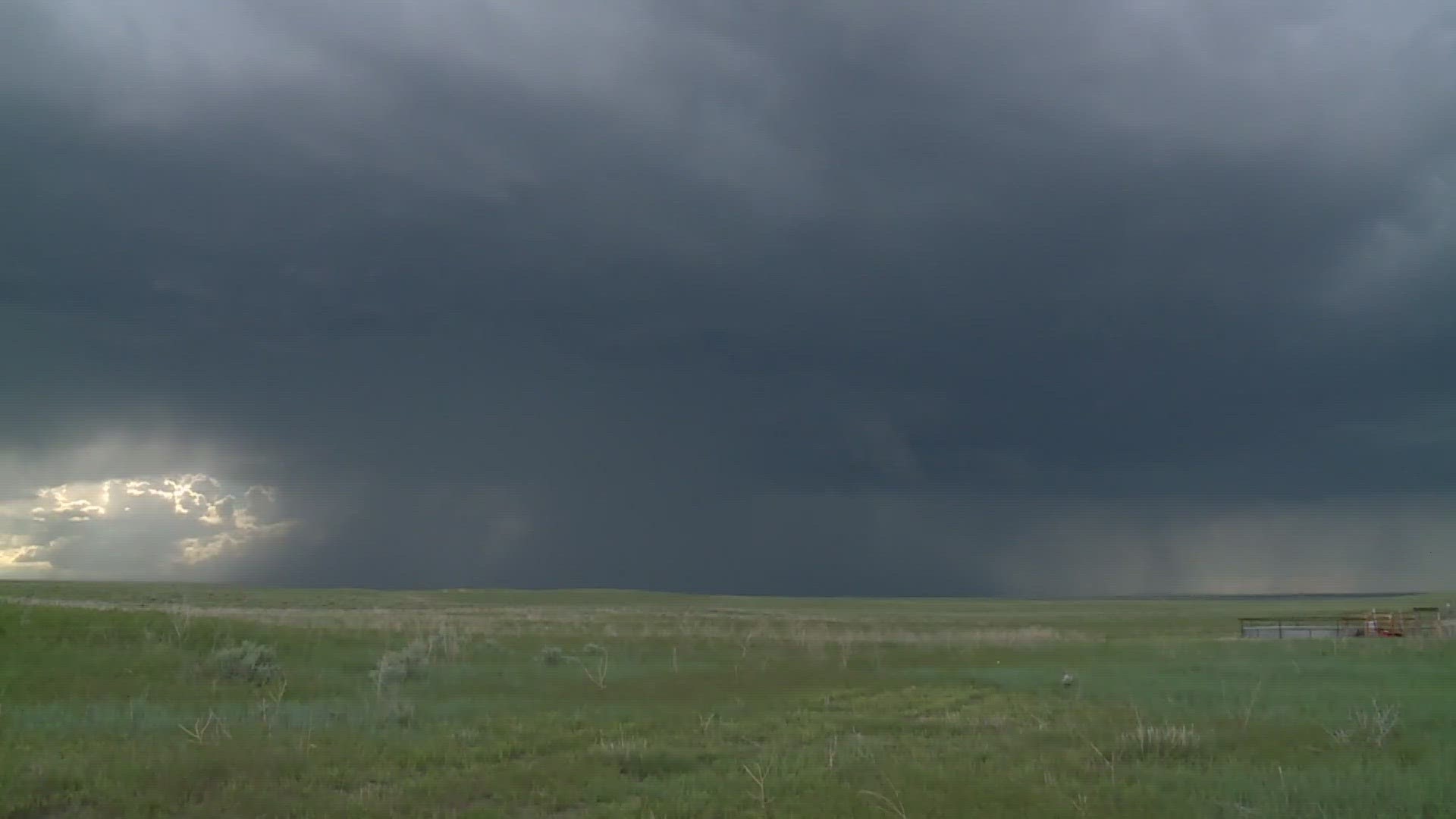DENVER — Significant forest fire potential is on the rise on the Western Slope, especially in southwest Colorado, as the monsoon season is a no-show. The Rocky Mountain Area Coordination Center (RMACC) is now forecasting above average wildfire potential for August.


So far this season, large wildfire activity has been limited thanks to near-average to near-record snowpack over the winter.
“We are starting to see any of that benefit that we did have starting to quickly get eaten away,” said Nickolai Reimer, a wildland fire meteorologist with RMACC.
He said the weather in the mountains has turned in a completely different direction since the snow stopped falling.
There was a slower than normal melt, but the mountains did not get the big spring rain that hit the Front Range and eastern plains.
A precipitation analysis by NOAA shows that over the last 60 days, the rainfall across the state has been split with above average rain to the east and well below average rain to the west.
Reimer said even the large fuels like pine tree forests are drying out.
“It’s something we are watching," he said. "We are monitoring closely but right now we’re not deeply concerned about it.”
Reimer said he is a little more concerned about the fact that the summer monsoon has not shown up yet. The monsoon is a weather pattern that brings moisture up to Colorado from the southwest from mid-June to mid-September. It brings important rain and humidity to the mountains after the winter snowpack melts away.
In 2021 and 2022, the summer monsoon arrived in early June and brought regular and widespread rainfall across all the mountain ranges in Colorado.
The last time the summer monsoon was a no-show was in 2020. That was a big factor in a record active wildfire season. There's no comparison however, or a way to predict the types of high wind events from August and September of 2022.
But Reimer said he is encouraged by a faint signal now showing up for the next 14 days. That could extend into Colorado’s western mountains.


“So hopefully this is a sign that at least things are changing enough that it won't be a complete no-show of the monsoon.”
But he also said that if the monsoon does show up late, it would likely just be a weak and short-lived surge.
The fear in the case of a weak monsoon in Colorado would be a higher risk of dry lightning instead of the beneficial rain. Dry lightning is cloud to ground lightning strikes during a thunderstorm that produces less than a tenth of an inch of rain.
SUGGESTED VIDEOS: Colorado Climate

